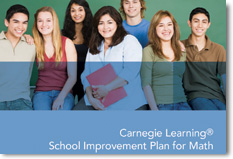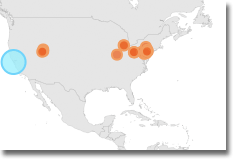Looking Back 35 Years to Learn about Local Experiments
With the growing interest among federal agencies in building local capacity for research, we took another look at an article by Lee Cronbach published in 1975. We found it has a lot to say about conducting local experiments and implications for generalizability. Cronbach worked for much of his career at Empirical’s neighbor, Stanford University, and his work has had a direct and indirect influence on our thinking. Some may interpret Cronbach’s work as stating that randomized trials of educational interventions have no value because of the complexity of interactions between subjects, contexts, and the experimental treatment. In any particular context, these interactions are infinitely complex, forming a “hall of mirrors” (as he famously put it, p. 119), making experimental results—which at most can address a small number of lower-order interactions—irrelevant. We don’t read it that way. Rather, we see powerful insights as well as cautions for conducting the kinds of field experiments that are beginning to show promise for providing educators with useful evidence.
We presented these ideas at the Society for Research in Educational Effectiveness conference in March, building the presentation around a set of memorable quotes from the 1975 article. Here we highlight some of the main ideas.
Quote #1: “When we give proper weight to local conditions, any generalization is a working hypothesis, not a conclusion…positive results obtained with a new procedure for early education in one community warrant another community trying it. But instead of trusting that those results generalize, the next community needs its own local evaluation” (p. 125).
Practitioners are making decisions for their local jurisdiction. An experiment conducted elsewhere (including over many locales, where the results are averaged) provides a useful starting point, but not “proof” that it will or will not work in the same way locally. Experiments give us a working hypothesis concerning an effect, but it has to be tested against local conditions at the appropriate scale of implementation. This brings to mind California’s experience with class size reduction following the famous experiment in Tennessee, and how the working hypothesis corroborated through the experiment did not transfer to a different context. We also see applicability of Cronbach’s ideas in the Investing in Innovation (i3) program, where initial evidence is being taken as a warrant to scale-up intervention, but where the grants included funding for research under new conditions where implementation may head in unanticipated directions, leading to new effects.
Quote #2: “Instead of making generalization the ruling consideration in our research, I suggest that we reverse our priorities. An observer collecting data in one particular situation…will give attention to whatever variables were controlled, but he will give equally careful attention to uncontrolled conditions…. As results accumulate, a person who seeks understanding will do his best to trace how the uncontrolled factors could have caused local departures from the modal effect. That is, generalization comes late, and the exception is taken as seriously as the rule” (pp. 124-125).
Finding or even seeking out conditions that lead to variation in the treatment effect facilitates external validity, as we build an account of the variation. This should not be seen as a threat to generalizability because an estimate of average impact is not robust across conditions. We should spend some time looking at the ways that the intervention interacts differently with local characteristics, in order to determine which factors account for heterogeneity in the impact and which ones do not. Though this activity is exploratory and not necessarily anticipated in the design, it provides the basis for understanding how the treatment plays out, and why its effect may not be constant across settings. Over time, generalizations can emerge, as we compile an account of the different ways in which the treatment is realized and the conditions that suppress or accentuate its effects.
Quote #3: “Generalizations decay” (p. 122).
In the social policy arena, and especially with the rapid development of technologies, we can’t expect interventions to stay constant. And we certainly can’t expect the contexts of implementation to be the same over many years. The call for quicker turn-around in our studies is therefore necessary, not just because decision-makers need to act, but because any finding may have a short shelf life.
Cronbach, L. J. (1975). Beyond the two disciplines of scientific psychology. American Psychologist, 116-127.






